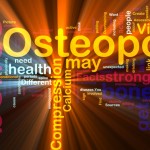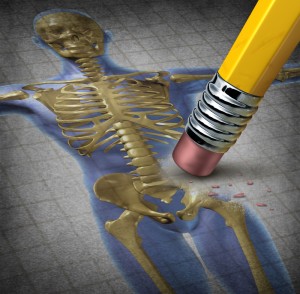

Fragility fractures, are most common in bones of the spine, wrists and hips.
This week sees the inaugural global congress in Berlin of the Fragility Fractures Network – a Global Network to Improve Fragility Fracture Management and Prevention.
Osteoporosis is a condition resulting in an increased risk of skeletal fractures due to a reduction in the density of bone tissue. The risk of osteoporosis starts to increase in women after the menopause because they no longer produce oestrogen. Fragility fractures, are most common in bones of the spine, wrists and hips.
The UKs National Centre for Clinical Excellence (NICE) have recently produced a short clinical guideline that offers best practice advice on the assessment of fragility fracture risk in adults. It provides guidance on the selection and use of risk assessment tools for those at risk of fragility fracture.
Here’s what they recommend
Consider assessment of fracture risk in all women aged 65 years and over and all men aged 75 years and over
Consider assessment of fracture risk in women aged under 65 years and men aged under 75 years in the presence of risk factors, such as:
- previous fragility fracture
- current use or frequent recent use of oral or systemic glucocorticoids
- history of falls
- family history of hip fracture
- other causes of secondary osteoporosis
- low body mass index (BMI) (less than 18.5 kg/m2)
- smoking
- alcohol intake of more than 14 units per week for women and more than 21 units per week for men.
Do not routinely assess fracture risk in people aged under 50 years unless they have major risk factors
Estimate absolute risk when assessing risk of fracture (for example, the predicted risk of major osteoporotic or hip fracture over 10 years, expressed as a percentage). The guideline details reasons for timing and use of FRAX, BMD (DEXA) and QFracture.
The Musculoskeletal Elf’s views
The ability to assess risk of, and prediction of, fragility fractures over a 10 year period is critical. Treatment typically involves the use of pharmacological agents and there are a whole suite of Cochrane reviews on these. It is also thought that disuse and unloading of the skeleton promotes reduced bone mass, whereas mechanical loading through exercise increases bone mass. The effect of exercise for preventing and treating osteoporosis in postmenopausal women was the subject of a Cochrane review authored by The Musculoskeletal Elf.
Are you involved in assessing fracture risk? Do you use exercise as part of a prevention or management option for those at risk?
Send us your views on this blog and become part of the Musculoskeletal Elf community.
Links
- National Centre for Clinical Excellence (NICE) 2012. CG146 Osteoporosis fragility fracture [full guideline] [short guideline] [patient booklet] [accessed 30th August 2012]
- Howe TE, Shea B, Dawson LJ, Downie F, Murray A, Ross C, Harbour RT, Caldwell LM, Creed G. Exercise for preventing and treating osteoporosis in postmenopausal women. Cochrane Database of Systematic Reviews 2011, Issue 7. Art. No.: CD000333. DOI: 10.1002/14651858.CD000333.pub2.
- Cochrane Database of Systematic reviews: osteoporosis.
- Fragility Fractures Network – a Global Network to Improve Fragility Fracture Management and Prevention.

